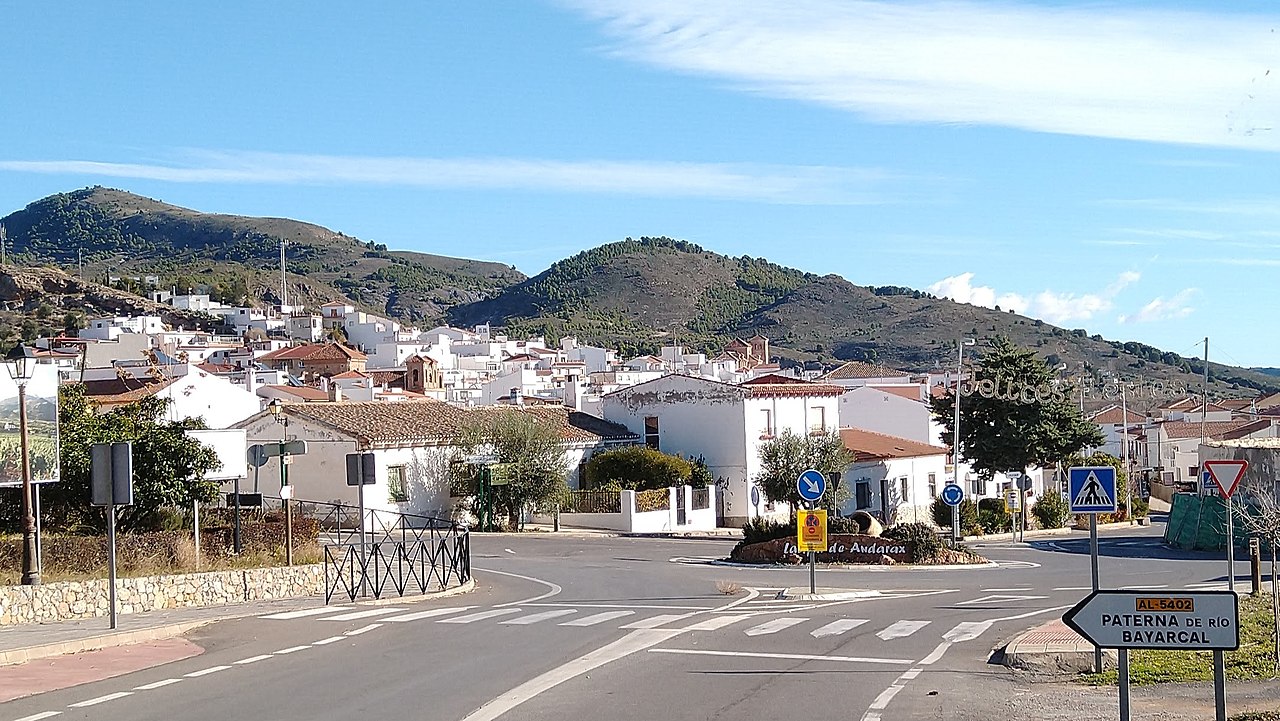
The villa of Laujar of Andarax is considered the capital of the Alpujarra of Almeria. It lies in a valley between Sierra Nevada, to whose natural park a good part of its municipal area belongs, and Gádor mountain range, at a height of almost a thousand meters above sea level.
Inhabited since the Bronze Age, as evidenced by the remains of the Argaric culture found in its citadel, the Romans settled in the area to exploit the lead mines. But it would be the Arabs who would remain in it the longest, since it did not pass into Christian hands until after the fall of Grenada. From such a rich history, there remain monuments that, along with wonderful surrounding scenery, they make us recommend a visit to Laujar de Andarax. We are going to show you everything you can see in this beautiful villa in the province of Almería.
Church of the Incarnation and other temples
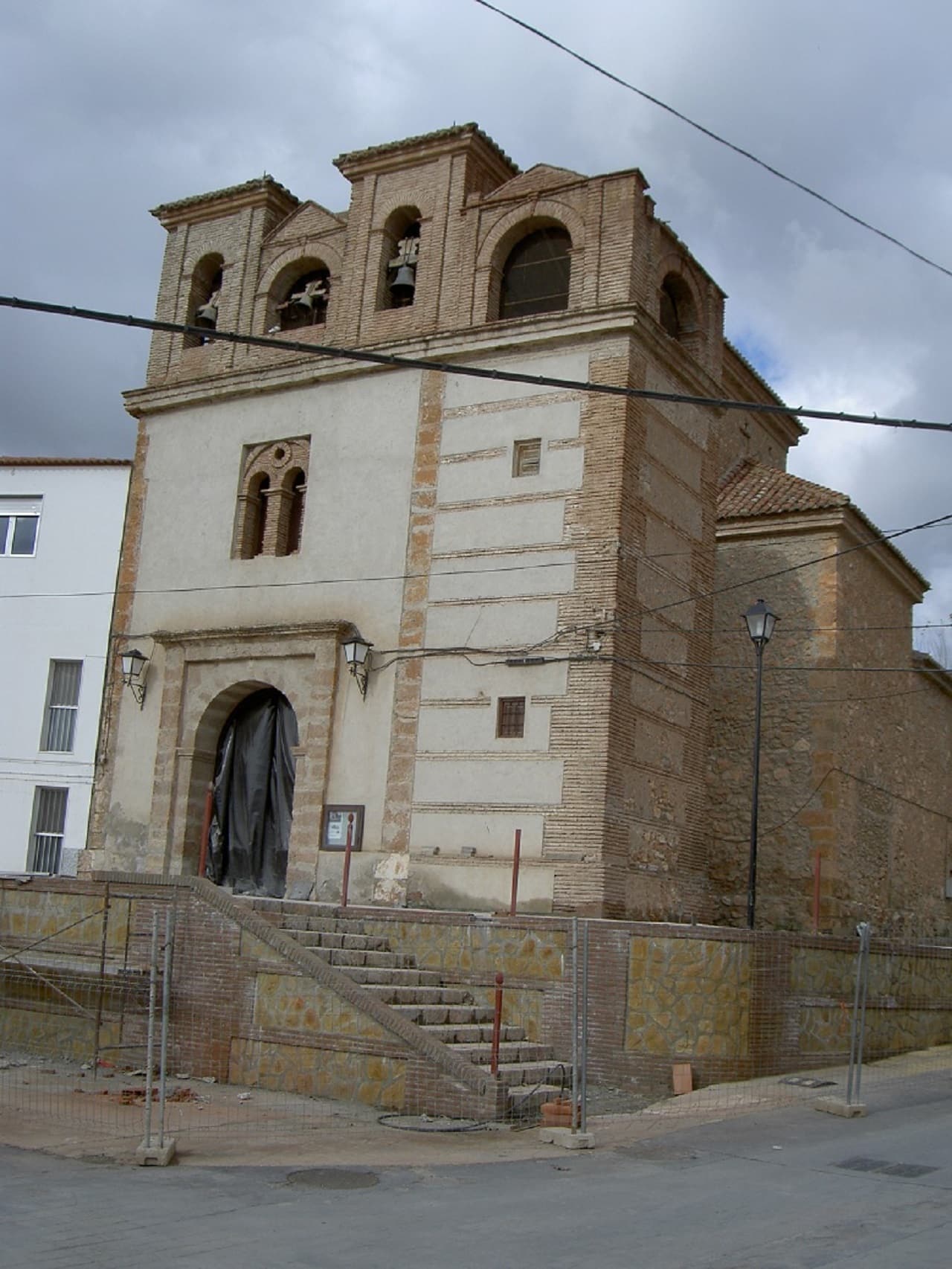
Hermitage of the Virgin of Health
The Church of the Incarnation is the most important temple in the town. It was built in the XNUMXth century, so its interior is genuinely baroque. However, externally it responds to the canons of Moorish style. It was built in brick and masonry giving it a design by Diego González and it consists of a single nave, but it houses great jewels inside.
This is the case of its Baroque altarpiece and the paintings of the Dutch school, as well as the effigy of the Immaculate Conception from the workshop of Alonso Cano. The floral motifs that adorn it are also very beautiful. But it is not the only religious monument that you must see in Laujar de Andarax.
La hermitage of Our Lady of Health it dates from the same period as the previous one and responds to the same artistic styles. Likewise, it has a single nave covered with a half-barrel vault and a Latin cross plan. You will find it in the western part of the urban area.
Very close to it is the hermitage of the Souls, built in the XNUMXth century following the canons of historicist style of the time. Much more sober than the previous one, it has a rectangular plan and, likewise, it is covered with a half-barrel vault. Its main façade is topped by a pediment that has a niche in its center.
Convent of San Pascual Bailón and other monuments in ruins
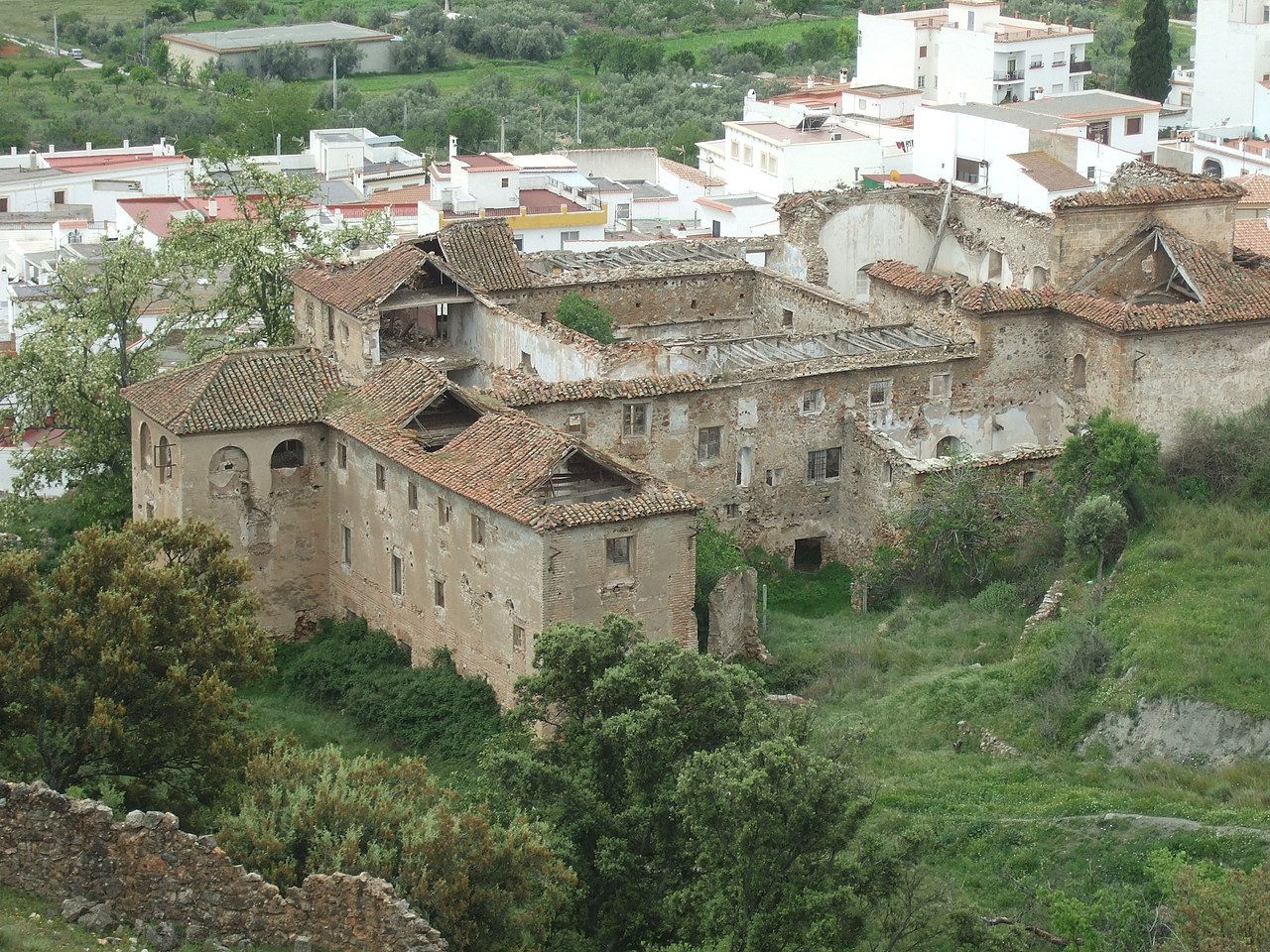
View of the convent of San Pascual Bailón in Laujar de Andarax
It is currently in ruins, but you can still appreciate its magnificence. It was built between the XNUMXth and XNUMXth centuries in Baroque, although later reforms introduced historicist elements. In fact, it was disentailed, that is, it lost its religious character, in the mid-XNUMXth century to become a barracks and perform other functions.
The imposing set of the monastery is completed with the remains of a church It has a Latin cross plan and a single nave from which two side chapels emerge. These communicate with the central section through semicircular arches. For its part, the transept is culminated in a semicircular vault on pendentives.
It was also Diego González responsible for the construction of the convent. We advise you to see it, but do not enter its ruins, as there is a danger of collapse. However, there are several initiatives for its restoration.
On the other hand, there are other monuments in ruins of Laujar de Andarax. You can also see, at the top of the villa, the remains of the old fortress, built between the XNUMXth and XNUMXth centuries. The best way to do it is from the botanical garden, which is opposite. It is considered the most important fortress of the Nasrid period and was a refuge for Boabdil after leaving Grenada. Next to it, you can also see remains of the old wall.
The Town Hall and other stately homes
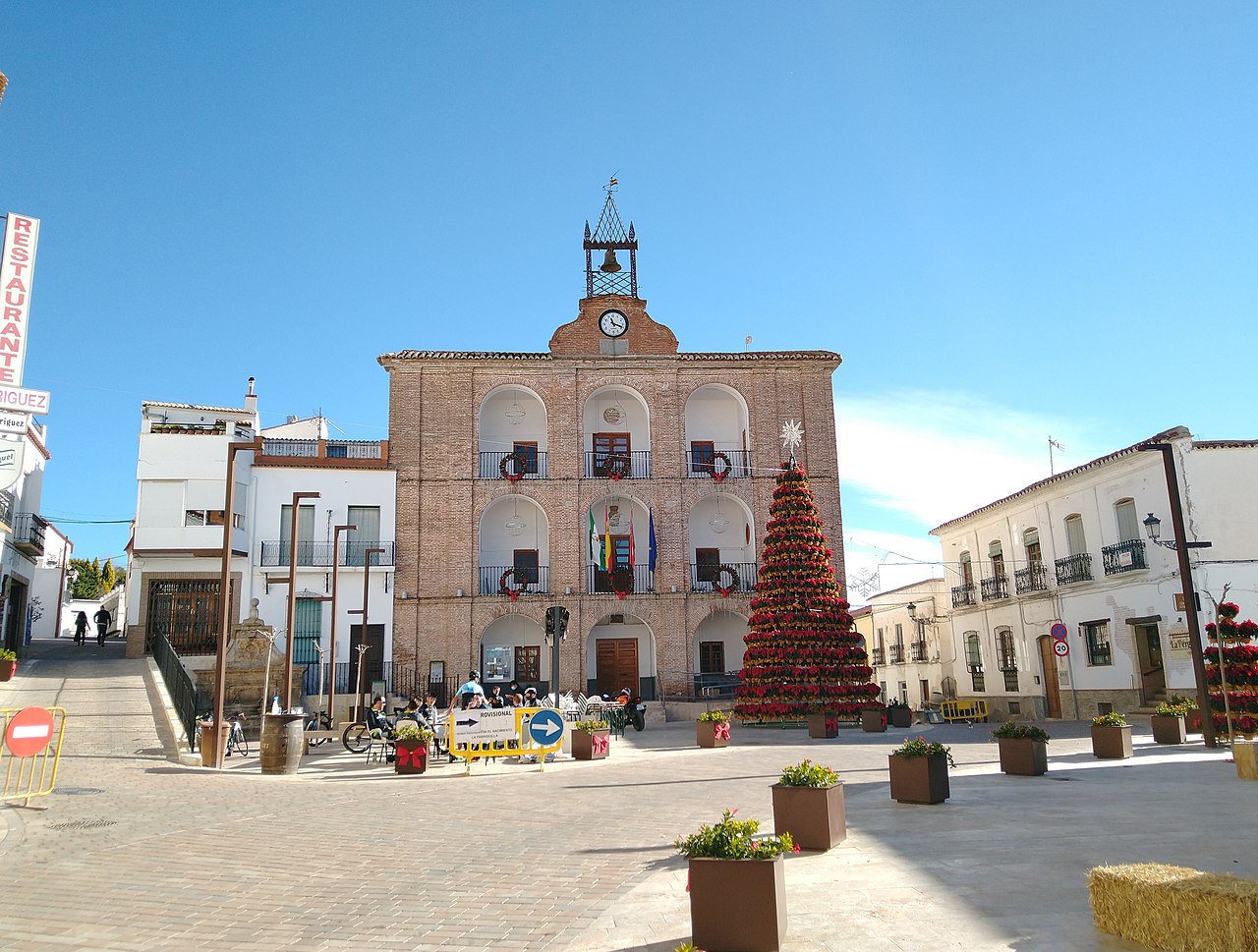
Laujar de Andarax Town Hall
The Town Hall of Lujar de Andarax is a beautiful building neoclassical-populist of the eighteenth century. It has a rectangular plan and three floors crowned by a clock and a bell. The main façade stands out in it, all built in exposed brick and with three semicircular arches per floor that form balconies with railings. Its decoration is completed by a coat of arms of the town over the opening of the main floor.
But the town of Almería has other beautiful manor houses. So, that of the Vicar, which is a baroque building from the XNUMXth century. It also has three heights that are executed through masonry drawers alternated with red brick. Three balconies adorn the first floor, the lateral ones a little smaller, and, on the central one, there is a heraldic coat of arms of the Yanguas family. It also has an interior patio with columns.
Other of the stately constructions of the town is the house of the Moya, built in the eighteenth century. It has three floors, although the upper one is an open gallery. For its part, the main one has three balconies with a lintel opening and the doorway is surrounded by a stonework frame with decorated jambs and lintel. As for the top floor, it is arranged in semicircular arches supported by Tuscan pilasters joined by an entablature.
Also, they are pretty Calvache house y that of the poet Francisco Villaespesa, a native of this town and noted disciple of the great Nicaraguan author Rubén Darío. You will find the latter in the Plaza de Fuente Nueva.
The Moorish bridge, the fountains and the views from Laujar de Andarax
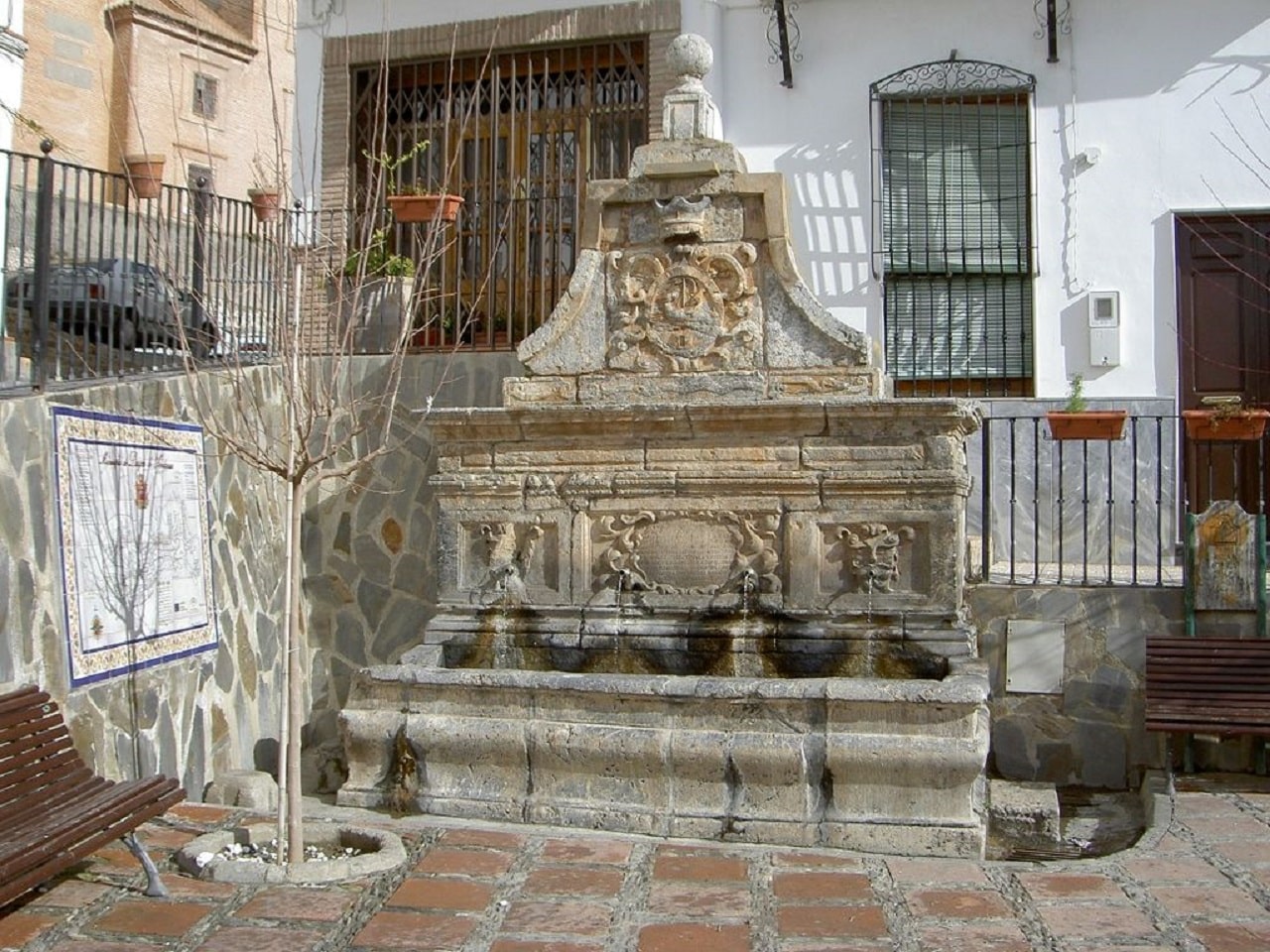
The fountain or pillar of the Plaza
The first receives this name for being from the Muslim era. However, it is not a bridge, but a aqueduct. It was built with mud and red brick and with three arches of different sizes and is in fairly good condition. You can see it on the outskirts of the village, in the so-called Count's ravine, in the Calache area.
But you should also know the numerous sources that Laujar has and that are called pillars. Among them, sob especially pretty those of the square, baroque style, of the Railing, of San Blas and dry pillar.
On the other hand, Laujar offers you wonderful views of the Alpujarra of Almeria and the Sierra Nevada. We recommend that you go to the Vega viewpoint. In this you will see, precisely, a statue dedicated to villaespesa, but, above all, you will be able to witness an incomparable landscape. However, if you want to get to know the natural wonders that surround Laujar better, we are going to suggest some hiking routes.
Routes around Laujar
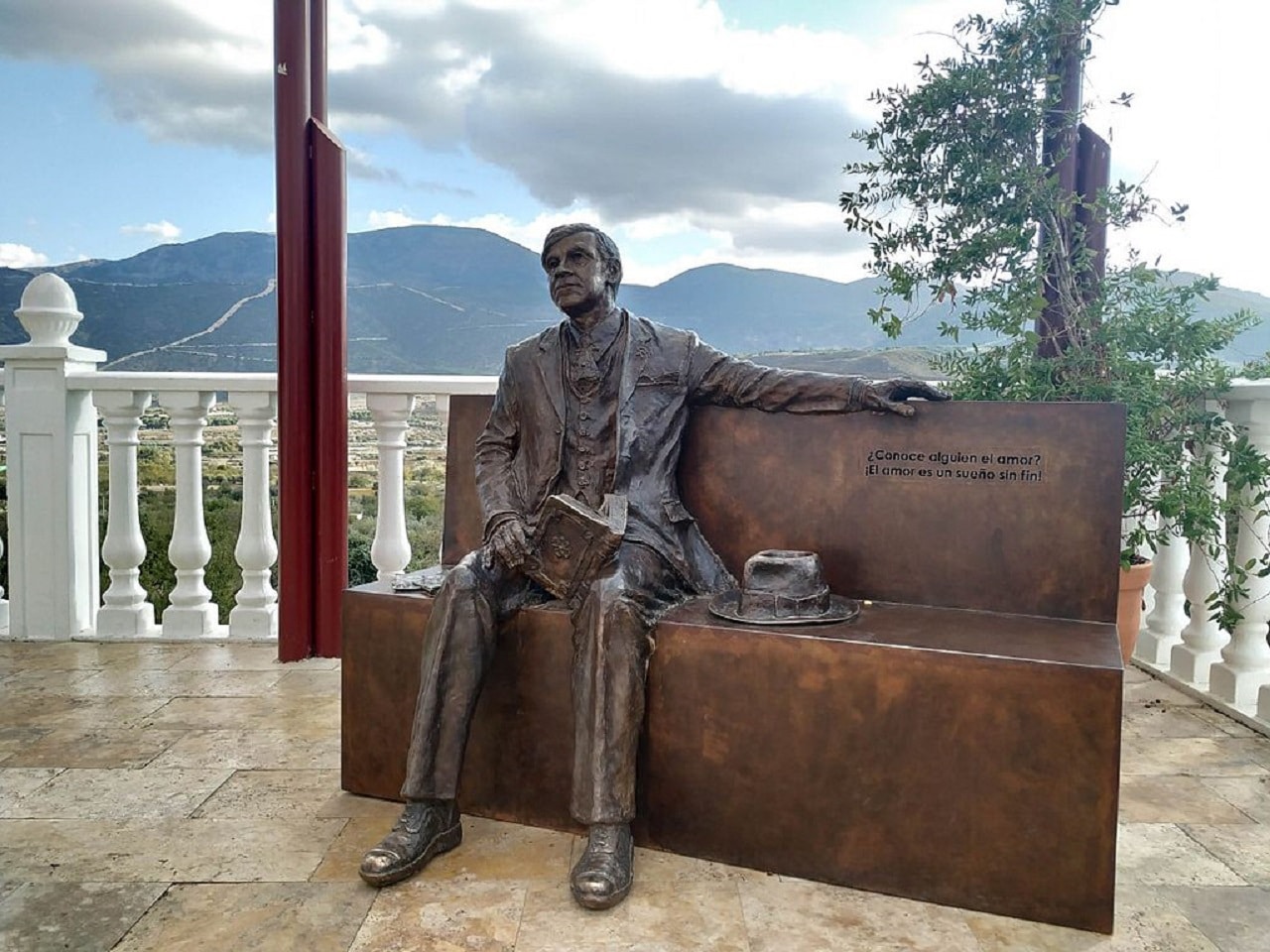
Statue of Francisco Villaespesa at the Vega de Laujar viewpoint
As we have just told you, the town is located in the heart of the Alpujarras of Almería and a large part of its territory belongs to the National Park of Sierra Nevada. This translates into beautiful mountain landscapes with valleys and ravines covered by forests and bathed by watercourses. You can enjoy all of them on foot, by bicycle or on horseback along the paths recovered for this purpose.
Among them, the Los Cerecillos-El Encinar path, which is twenty kilometers long and which historically connected Laujar de Andarax with Fiñana crossing the Sierra Nevada. It allows you to enjoy the natural park at its best, as it passes through the Almirez hill and the Gabiarra hostel. As you can imagine, for all this it has great scenic and biological interest.
Another magnificent route is the one that takes you to the Aguadero ravine and passes through those of El Horcajo, Majadahonda and Palomar. There are four torrents that lead to the source of the Andarax river in the area of La Murilla. Therefore, if you do this tour, you will enter the valleys of the Sierra Nevada, with an abundance of chestnut, pine and holm oak forests. Regarding the former, pay special attention to the rose chestnut, an impressive specimen of more than eight meters in diameter.
Of course, if you are interested in industrial heritage, you can do the route of the Mines and Caparidán. Because it travels along the roads used by the muleteers in the past to transport the lead extracted in the area. In addition, it takes you to the Collado de la Encinilla, from which you can glimpse the Jules Verne lookout. But, above all, you will see the Caparidan mines. And this leads us to talk about the mining heritage of Laujar de Andarax.
The mining heritage of the area
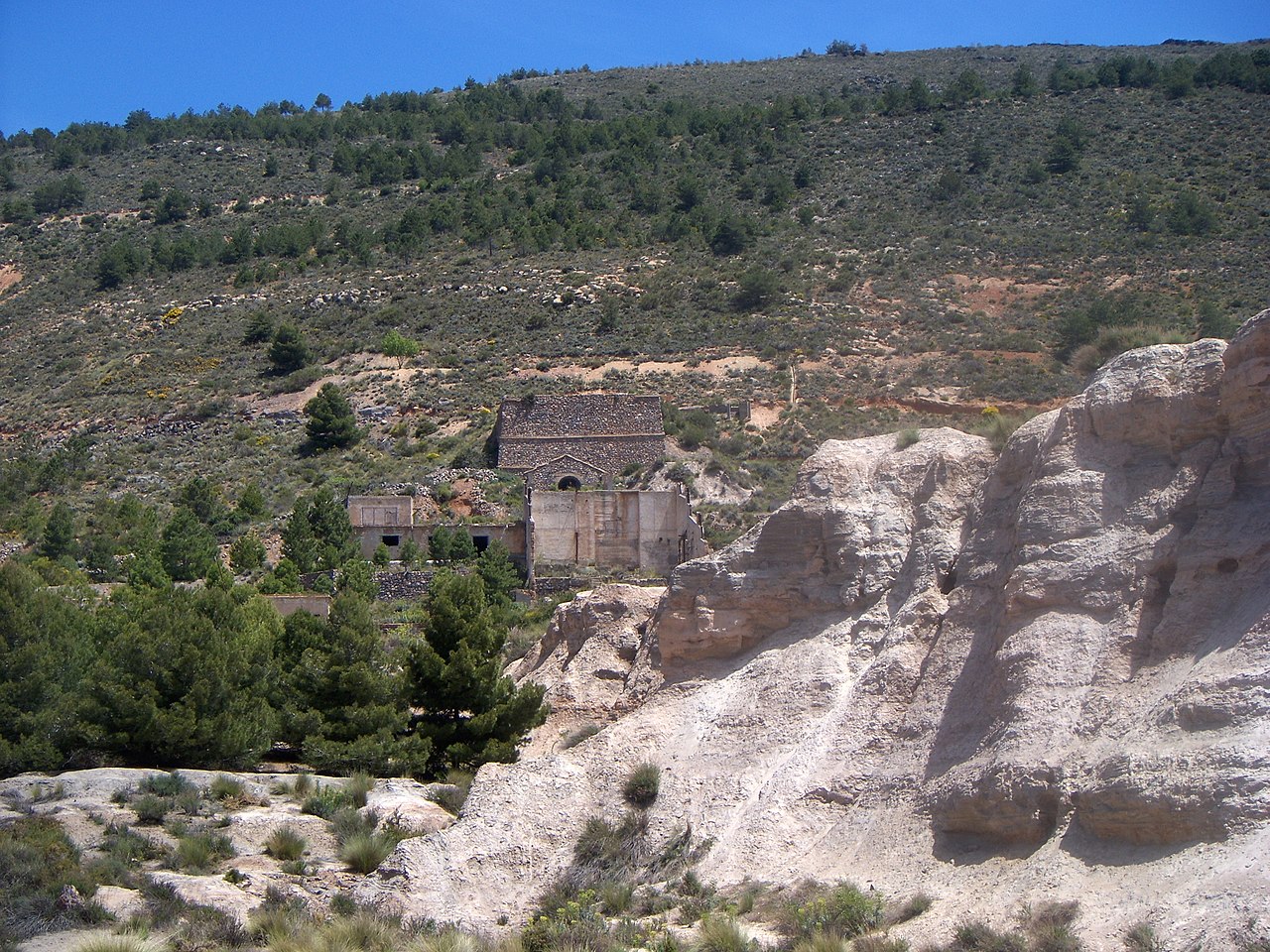
View of the Martos mines
As an example of the exploitation of mines in Roman times, you have the so-called Giant's Grave, a building of large ashlars that is in the Sierra de Gádor. In it are the Martos mines, of which several constructions such as the house of engineers or the cistern are preserved in ruins.
For its part, the minillas are located at the foot of the Almirez hill and the Dream Hill chimney It was used for the smelting of lead. You can also see, about four kilometers from Laujar, a booth for road laborers.
They have a different character, but they are also interesting, the Bonaya boulevard aqueduct, water mills like the one of the Birth or buildings like the call factory, which was an old construction of the electric company that supplied the area and is now a restaurant.
In conclusion, we have shown you everything you can see and do in Laujar of Andarax. But, if you come to see this beautiful villa, we recommend that you also visit Almería, the capital of the province, which offers you monuments such as the Alcazaba and the Cathedral of La Encarnación and also beautiful beaches such as San Miguel or Las Amoladeras. Dare to make this trip.